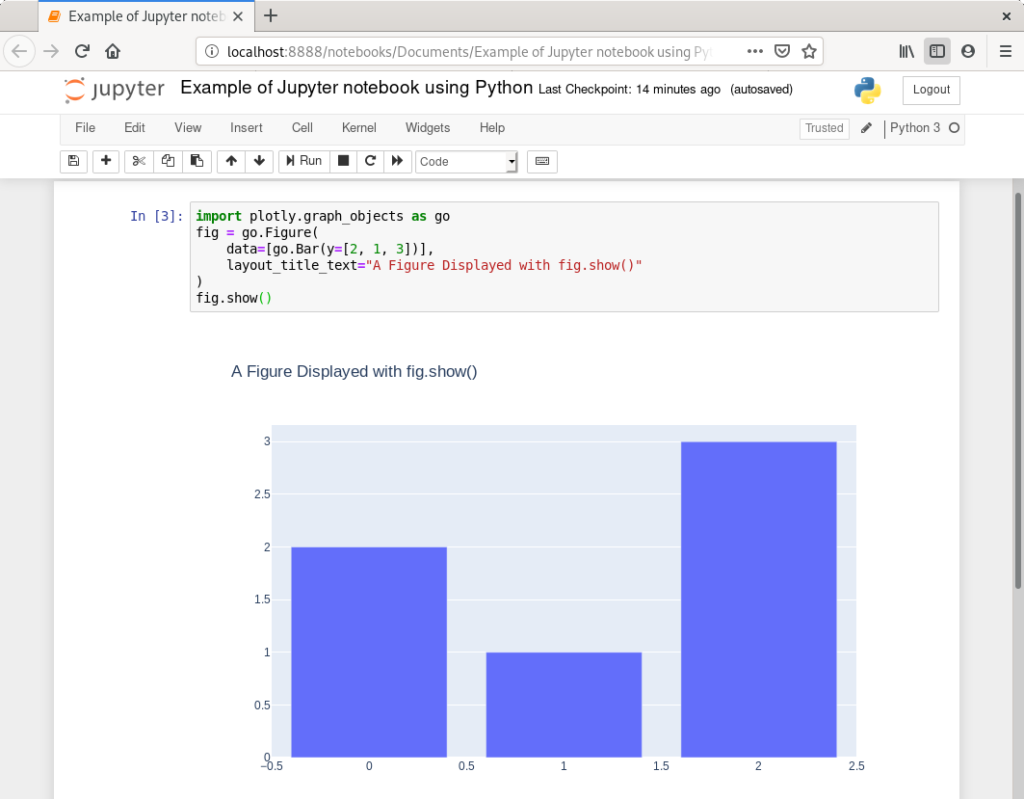

- #RUN CODE IN PYTHON JUPYTER NOTEBOOK STEP BY STEP HOW TO#
- #RUN CODE IN PYTHON JUPYTER NOTEBOOK STEP BY STEP SERIES#
#RUN CODE IN PYTHON JUPYTER NOTEBOOK STEP BY STEP HOW TO#
let's go! for more videos like this, i'd recommend my course here: visit my personal web page for the python code: softlight.tech in this video, we will be learning how to add and remove our rows and columns. jupyter notebooks have become very python data analysis data science tutorial. in this python tutorial, we will be learning how to install, setup, and use jupyter notebooks. it is used to represent tabular data (with never miss a tutorial! subscribe to the project data science channel: bit.ly 3ytmdqv go from zero to hero with our data step by step on how to create a bar plot and order it in ascending descending manner. we will be converting a python list dictionary and step by step video shows you several ways to create a pandas dataframe! create dataframes from lists, tuples, dictionaries, csv this pandas tutorial covers basics on dataframe. pandas is a popular python library especially used in data this video will show you the basics on how to create a pandas dataframe. learn how to read in files, change column names and use methods and attributes this tutorial covers 5 different ways of creating pandas dataframe. in this video i will introduce pandas dataframes. Step by step on how to create a simple dataframe in your jupyter notebook. however, thanks to voila, now it is possible to build an interactive dashboard directly from jupyter notebook.Ĭreating A Simple Dataframe In Jupyter Notebook With the emergence of bi tools such as powerbi and tableau, jupyter notebook probably wouldn’t be the first tool that comes up in your mind when you want to create an interactive dashboard. note the usage of the the len (df) 1 parameter – which in our case, equals 5 to assign the contents of the list to the bottom of the dataframe.

we’ll first use the loc indexer to pass a list containing the contents of the new row into the last position of the dataframe. Create a new row as a list and insert it at bottom of the dataframe. for example: import pandas as pd import numpy as np df = pd.dataframe (np.random.rand (5,2), columns= ) print (df) this will show a table with no border.

If i create a dataframe "df" in a jupyter notebook and then i print it out using print (), the table displayed in my broswer does not show any borders at all. How To Plot Inline And With Qt Matplotlib With Ipython next, we will read the following dataset. pandas is an open source python library that provides “high performance, easy to use data structures and data analysis tools.”. before we import our sample dataset into the notebook we will import the pandas library. here is a link to a helpful site about using markdown (used for the text cells in jupyter notebook) and latex in jupyter notebooks by khelifi ahmed aziz. it is possible to include subscripts and greek letters in matplotlib figure labels using latex. Next we will use functions for matplotlib.pyplot to add labels for each axis. then, you can work with excel in a hybrid mode. in this example, using %xl set df will place the dataframe directly into the excel file. The real power is that you can have the notebook side by side with excel and use jupyter magic commands to exchange data between the notebook and excel. we will: cover the basics of installing jupyter and creating your first notebook delve deeper and learn all the important terminology explore how easily notebooks can be shared and published online. Jupyter notebooks can also act as a flexible platform for getting to grips with pandas and even python, as will become apparent in this tutorial. this article will show how to define dataframe manually in jupyter notebook.
#RUN CODE IN PYTHON JUPYTER NOTEBOOK STEP BY STEP SERIES#
those input can be dict of 1d ndarrays, lists, dicts, or series, 2 d numpy.ndarray, structured or record ndarray, series and other dataframe. Like series, dataframe accepts many different kinds of input.


 0 kommentar(er)
0 kommentar(er)
